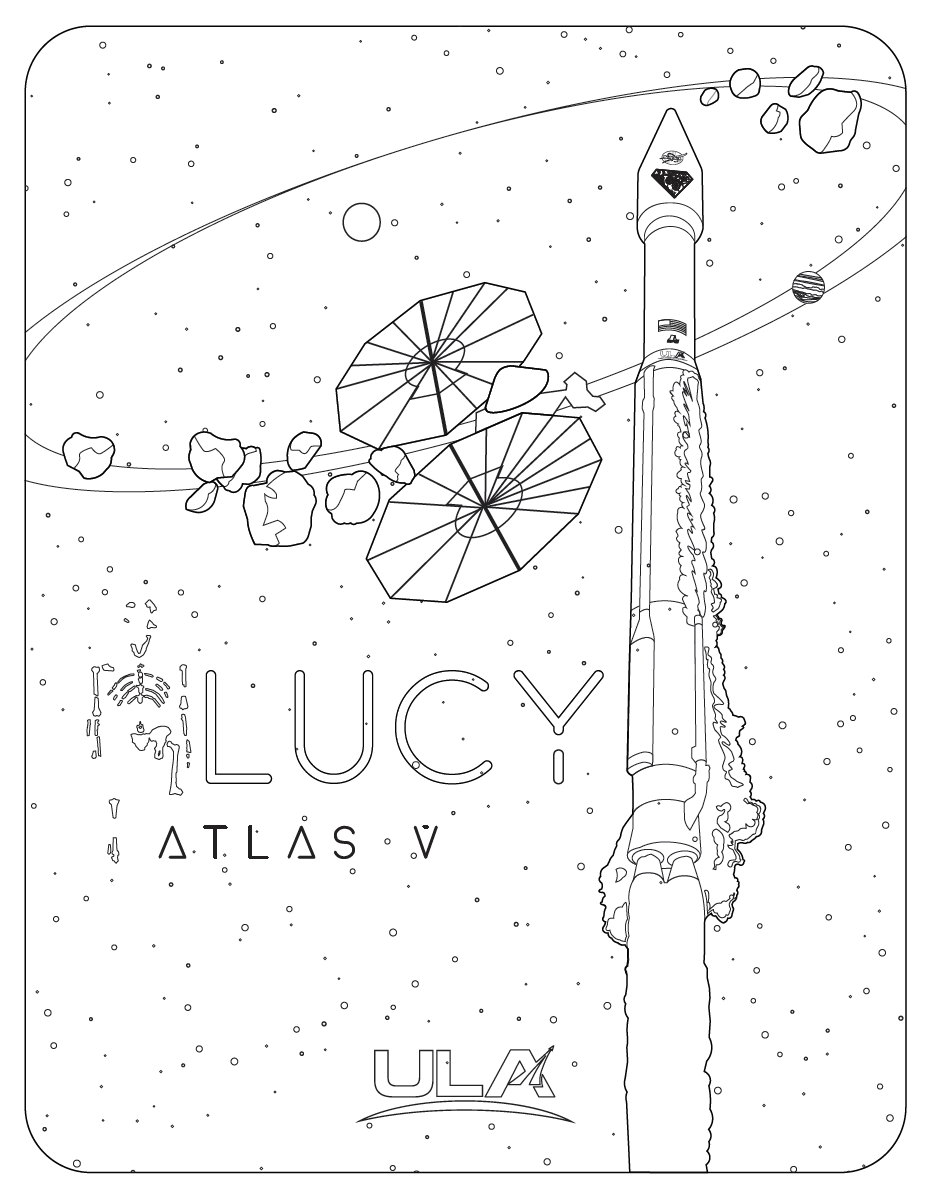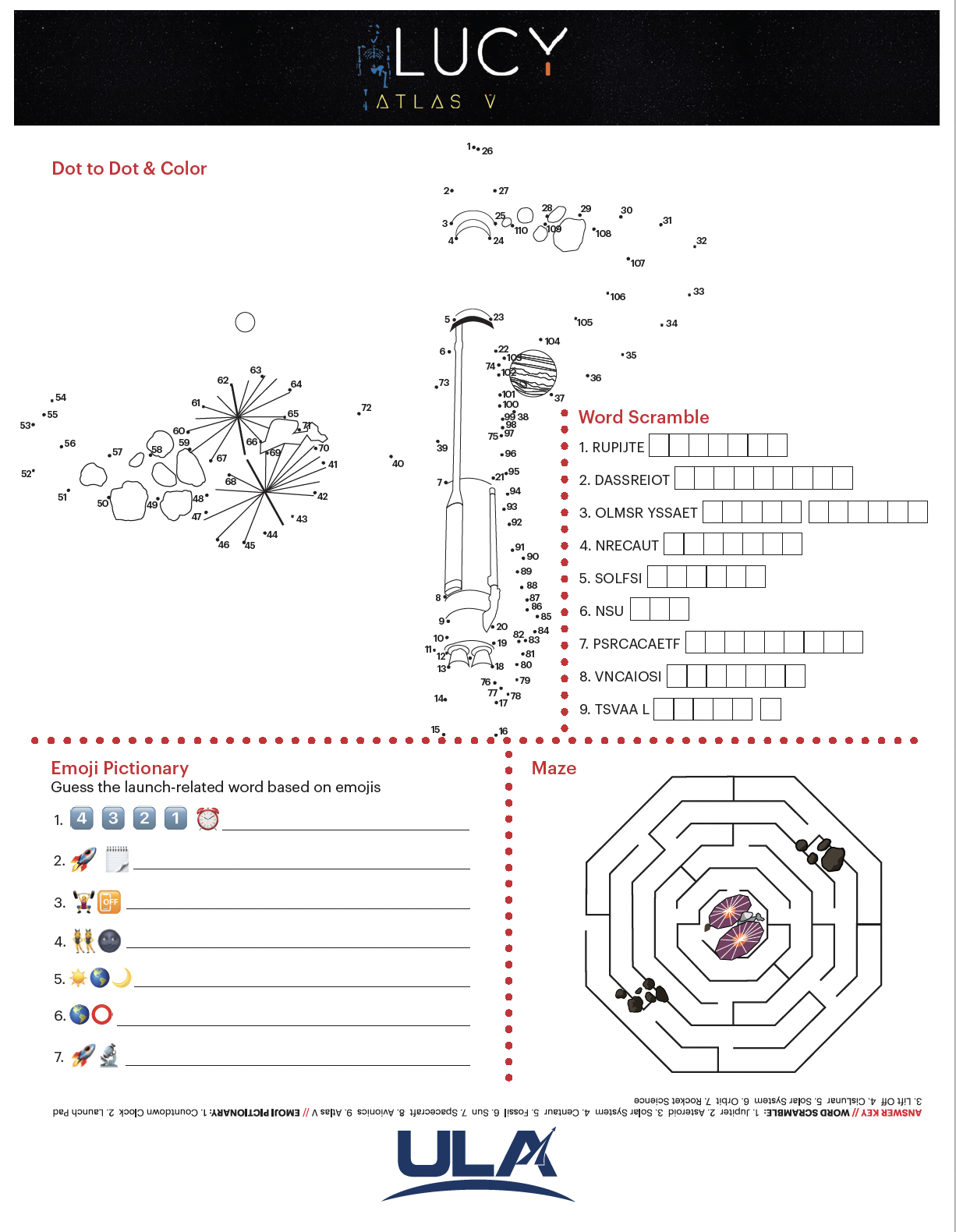Atlas V Launches Lucy
A United Launch Alliance (ULA) Atlas V rocket carrying the Lucy mission for NASA lifted off on Oct. 16 at 5:34 a.m. EDT from Space Launch Complex-41 at Cape Canaveral Space Force Station.
Launch Webcast
Live updates
To keep up to speed with updates to the launch countdown, dial the ULA launch hotline at 1-877-852-4321.
Join the conversation at Twitter, Facebook, Instagram and
LinkedIn
#AtlasV #LucyMission
Mission Overview
NASA’s Lucy mission is the first space mission to explore a diverse population of small bodies known as the Jupiter Trojan asteroids. These small bodies are remnants of our early solar system, now trapped on stable orbits associated with – but not close to – the giant planet Jupiter.
The Trojan asteroids are in two “swarms” that lead and follow Jupiter in its orbit around the Sun, and are almost as numerous as the objects in the Main Asteroid Belt. Over its 12-year primary mission, Lucy will explore a record breaking number of asteroids, flying by one main belt asteroid and seven Trojan asteroids.
The Lucy mission is named after the fossilized skeleton of an early hominin (pre-human ancestor) that was found in Ethiopia in 1974 and named “Lucy” by the team of paleontologists who discovered it. And just as the Lucy fossil provided unique insights into humanity’s evolution, the Lucy mission promises to revolutionize our knowledge of planetary origins and the formation of the Solar System.
The Lucy mission is a joint mission of NASA’s Goddard Spaceflight Center, the Southwest Research Institute and NASA’s Launch Services Program (LSP) based at Kennedy Space Center.
Launch Vehicle
Payload Fairing (PLF)
The spacecraft is encapsulated in the 14-ft (4-m) diameter large payload fairing (LPF). The LPF is a bisector (two-piece shell) fairing consisting of aluminum skin/stringer construction with vertical split-line longerons. The vehicle’s height with the LPF is approximately 188 ft (57.3 m).
Centaur
The Centaur second stage is 10 ft (3 m) in diameter and 41.5 ft (12.6 m) in length. Its propellant tanks are pressure-stabilized and constructed of corrosion-resistant stainless steel. Centaur is a cryogenic vehicle, fueled with liquid hydrogen and liquid oxygen, powered by an RL10C-1 engine producing 22,900 lbs (101.8 kilo-Newtons) of thrust. The cryogenic tanks are insulated with a combination of helium-purged blankets, radiation shields and spray-on foam insulation (SOFI). The Centaur forward adapter (CFA) provides structural mountings for the fault-tolerant avionics system and structural and electrical interfaces with the spacecraft.
Booster
The booster is 12.5 ft (3.8 m) in diameter and 106.5 ft (32.5 m) in length. The booster’s tanks are structurally rigid and constructed of isogrid aluminum barrels, spun-formed aluminum domes and intertank skirts. Booster propulsion is provided by the RD-180 engine system (a single engine with two thrust chambers). The RD-180 burns RP-1 (Rocket Propellant-1 or highly purified kerosene) and liquid oxygen and delivers 860,200 lbs (3.83 mega-Newtons) of thrust at sea level. The Centaur avionics system, provides guidance, flight control and vehicle sequencing functions during the booster and Centaur phases of flight.
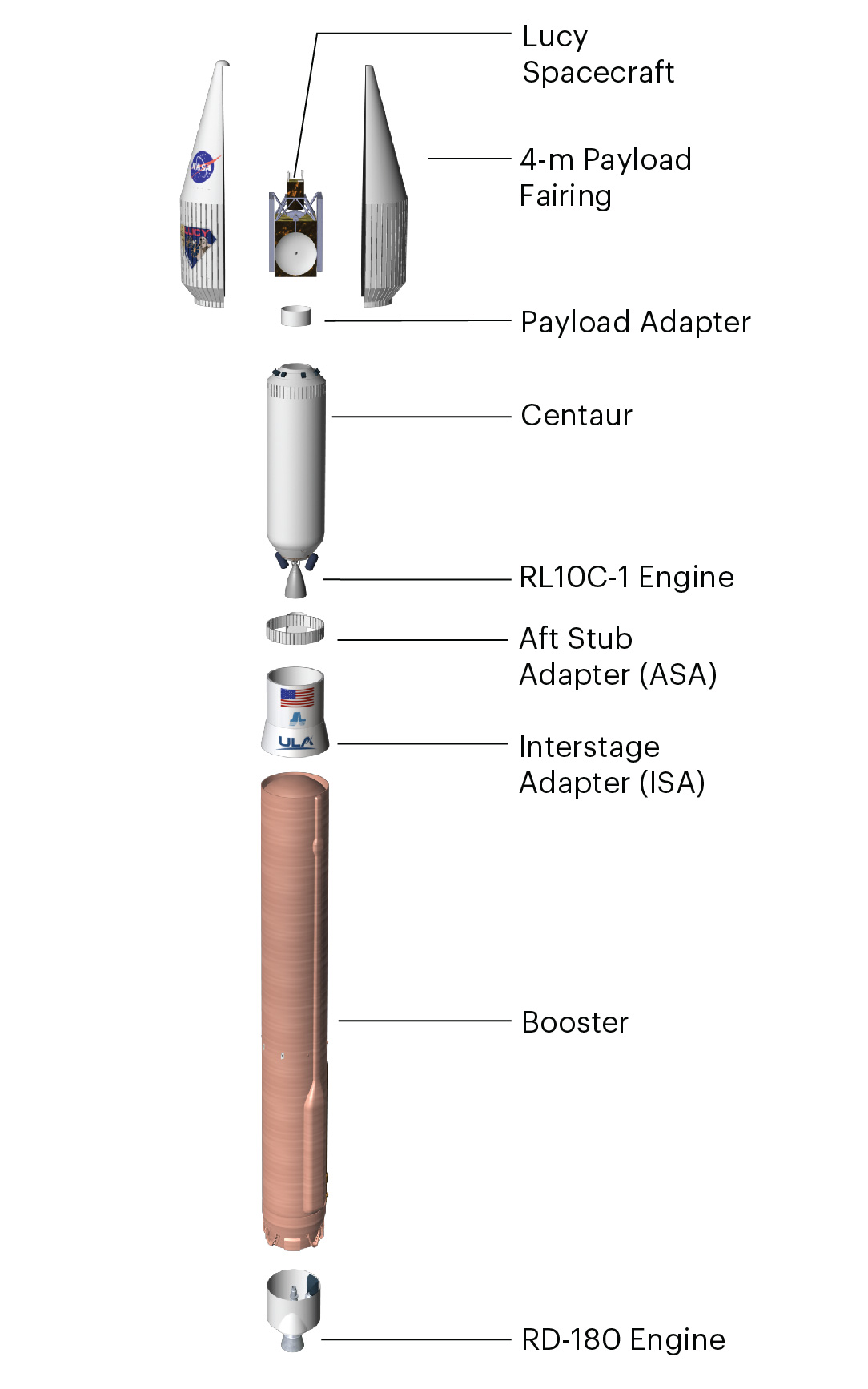
Flight Profile
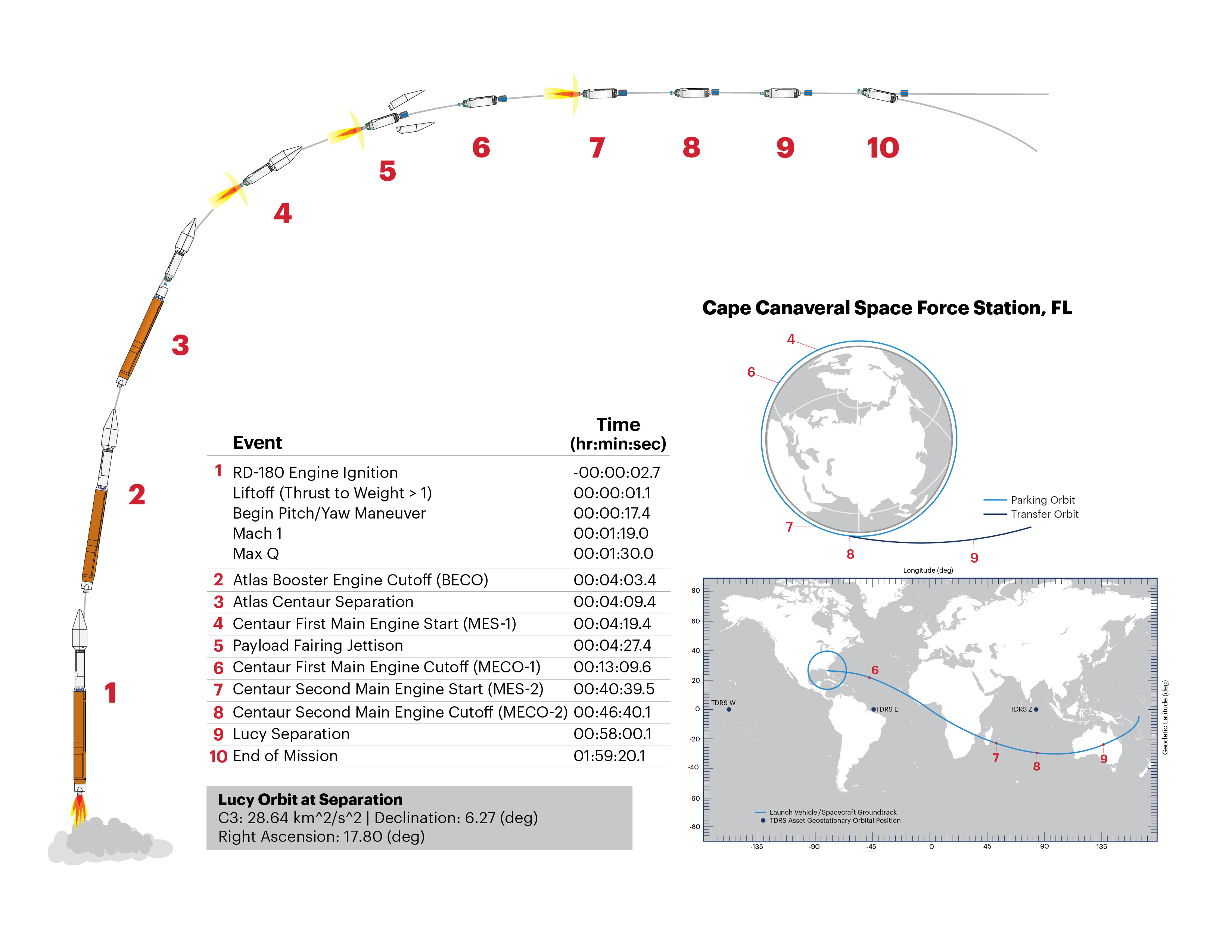
Space Launch Complex-41 // Processing
Space Launch Complex-41, the East Coast home of the Atlas V rocket at Cape Canaveral Space Force Station in Florida, employs a “clean pad” concept of operations to ready launch vehicles and payloads for ascent into space. The rocket elements are assembled atop a Mobile Launch Platform inside the Vertical Integration Facility (VIF) located adjacent to the launch pad. The platform and fully stacked Atlas V then travels by rail approximately 1,800 feet northward from the VIF to the pad for the final countdown, fueling and liftoff. Complex 41 was constructed by the U.S. Air Force in the 1960s for the Titan rocket program. The site was rejuvenated in support of the Atlas V starting in the late 1990s.
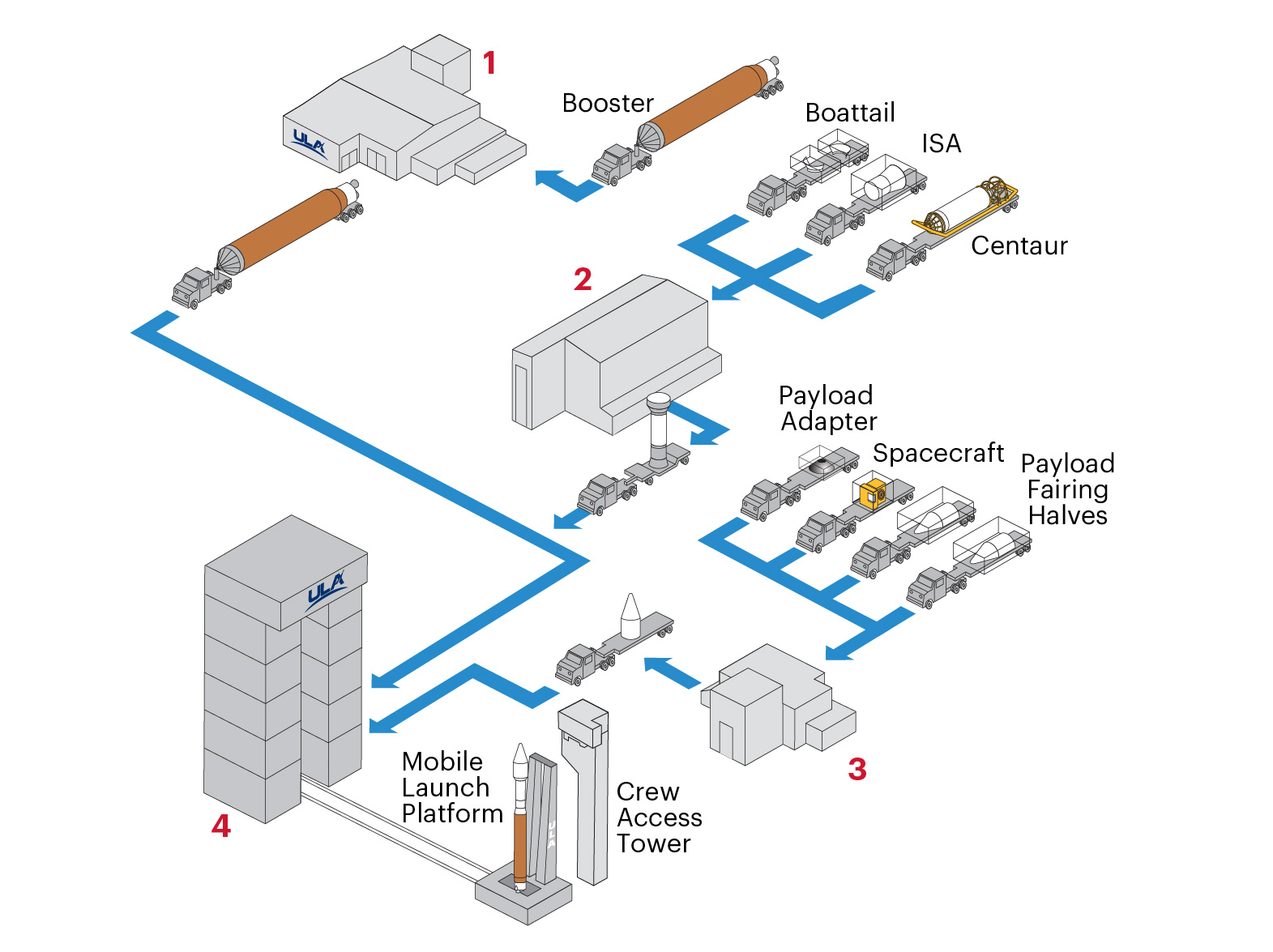
1. Atlas Spaceflight Operations Center (ASOC)
Launch Control Center & Mission Director’s Center
2. Delta Operations Center
ISA, Centaur, Boattail & Vertical Integration
3. Spacecraft Processing Facility
Spacecraft Processing, Testing & Encapsulation
4. Vertical Integration Facility
Launch Vehicle Integration & Testing, Spacecraft Mate &
Integrated Operations
Production
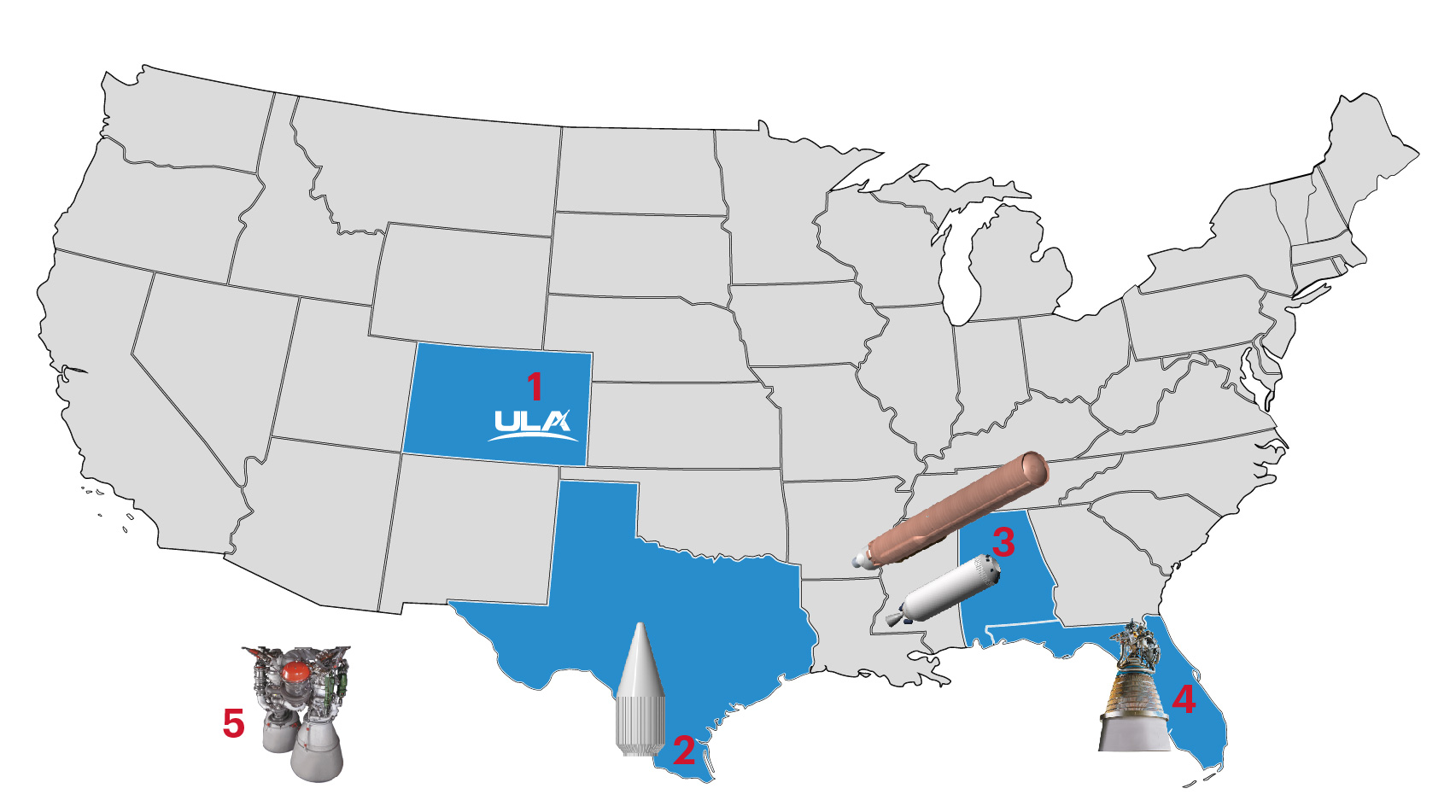
1. Denver, CO
ULA Headquarters &
Design Center Engineering
2. Harlingen, TX
Payload Fairing,
Payload Fairing Adapter,
Booster Adapter &
Centaur Adapter Fabrication
3. Decatur, AL
Booster Fabrication
& Final Assembly,
Centaur Tank Fabrication &
Centaur Final Assembly
4. West Palm Beach, FL
RL10C1 Engine Fabrication at
Aerojet Rocketdyne
5. Khimki, Russia
RD180 Engine Fabrication at
NPO Energomash
Media // Downloads
Flickr Album
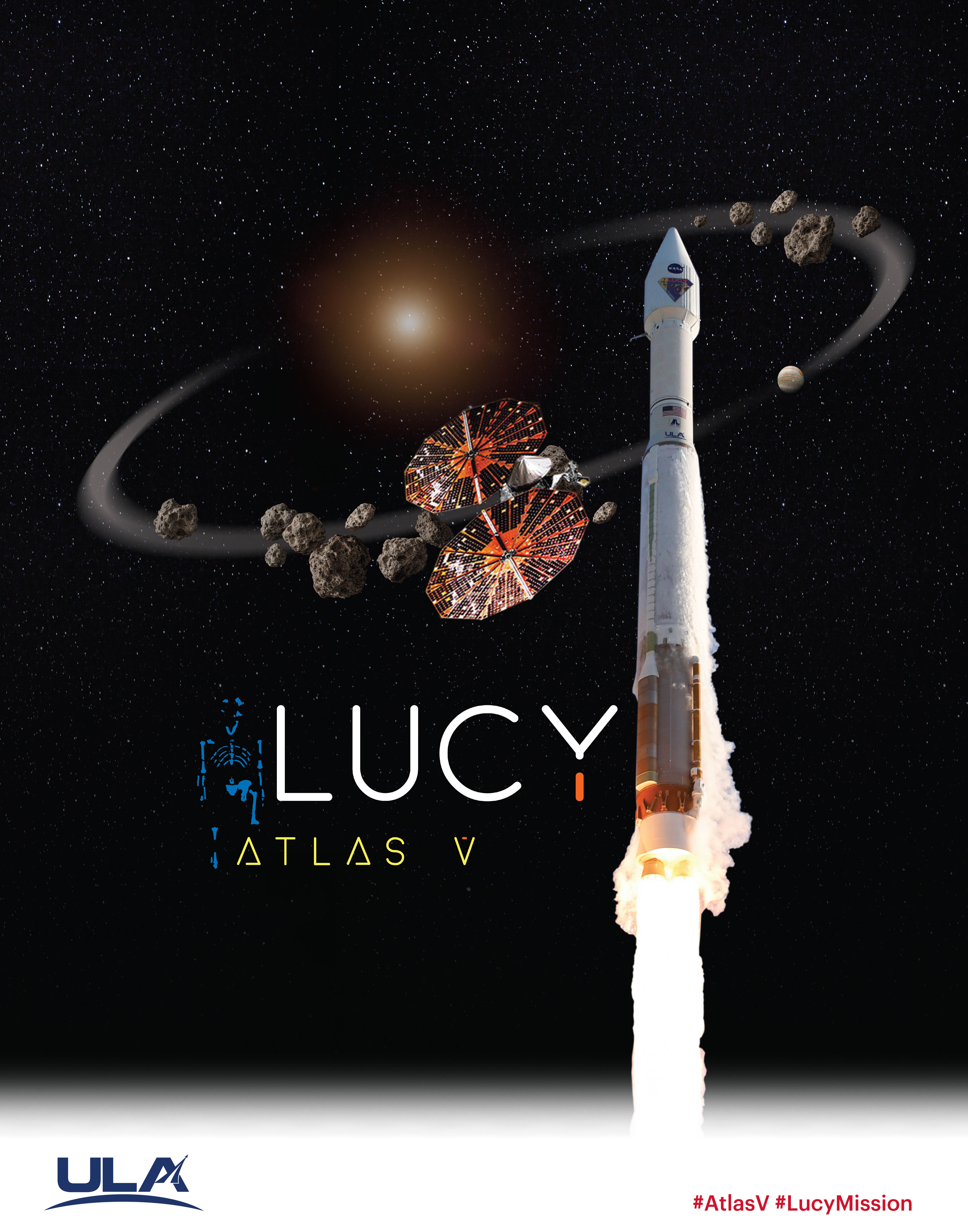
Pumpkin Carving
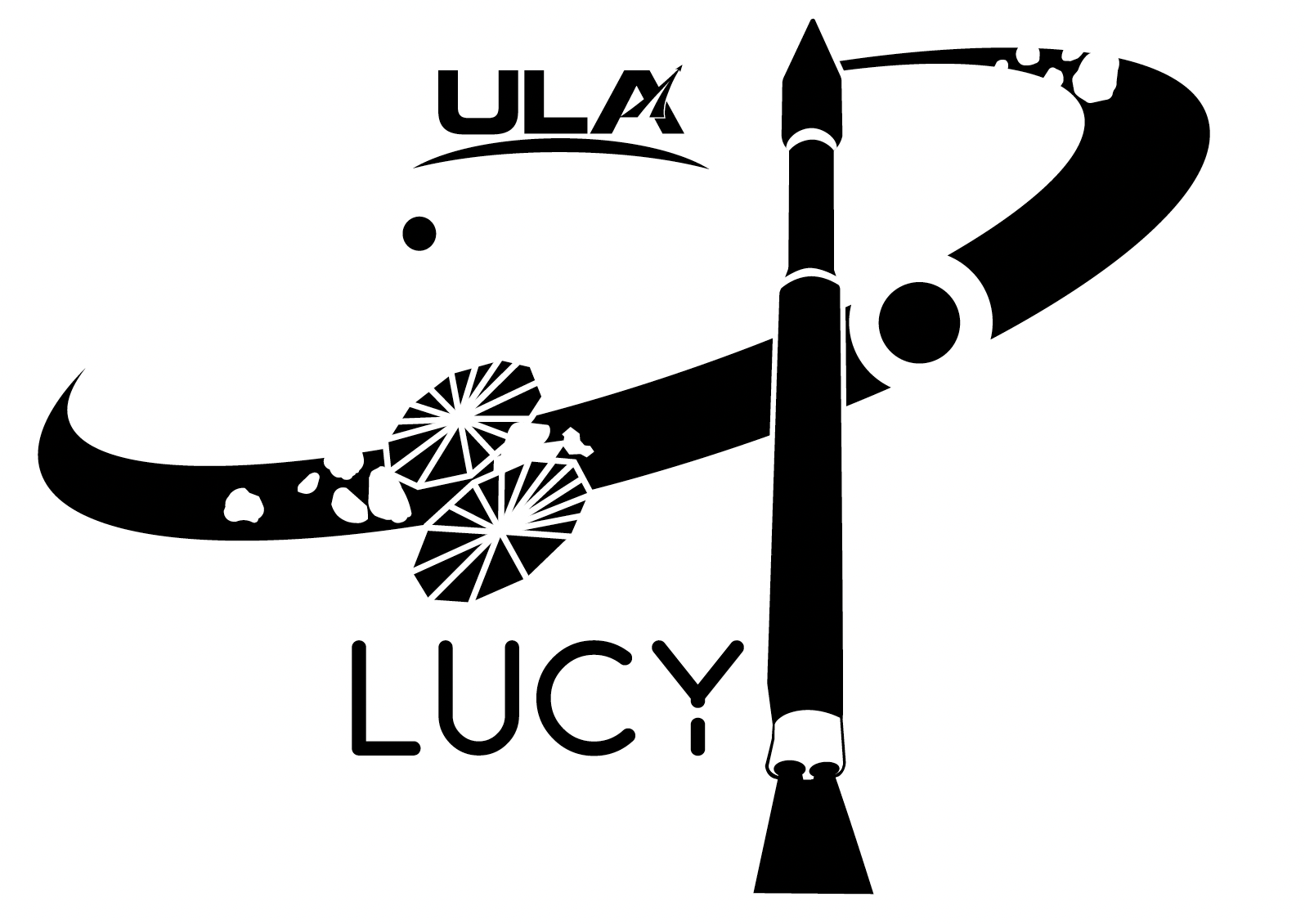
Click the link above for both beginner and advanced versions for download.


